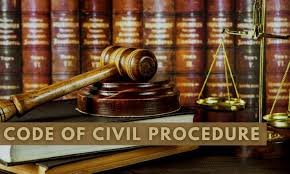Introduction:
The Civil Procedure Code of 1908, often abbreviated as CPC, is a foundational legal document that governs civil proceedings in India. Enacted over a century ago, it has stood the test of time and remains a cornerstone of the Indian legal system. This article delves into the key aspects of the CPC, its historical background, structure, and significant provisions.
Historical Background:
The roots of the Civil Procedure Code can be traced back to the British era when India was under colonial rule. The need for a uniform code to regulate civil litigation across the country became evident as various regions had different procedural laws. In 1859, the first Civil Procedure Code was introduced, but it underwent several revisions before the enactment of the CPC in 1908. This code was a significant milestone as it consolidated and streamlined civil procedures, bringing coherence and efficiency to the legal system.
Structure of the CPC:
The Civil Procedure Code of 1908 is divided into numerous sections and orders, each dealing with specific aspects of civil litigation. The structure is designed to ensure clarity and procedural fairness in legal proceedings. Some of the key sections include:
- Jurisdiction of Civil Courts (Sections 9-20): These sections define the jurisdiction of civil courts based on territorial, pecuniary, and subject matter considerations.
- Institution of Suits (Sections 15-25): These sections outline the procedures for filing civil suits, including jurisdictional issues, plaints, and written statements.
- Execution of Decrees (Sections 36-74): These sections deal with the enforcement of court judgments and decrees, including execution processes, attachment of property, and arrest and detention.
- Appeals (Sections 96-109): These sections govern the process of appealing court decisions, including grounds for appeal, procedures for filing appeals, and appellate jurisdiction.
- Revision (Sections 115-115): This section pertains to the revisional powers of higher courts to review and correct errors in lower court judgments.
Significant Provisions of the CPC:
The Civil Procedure Code of 1908 contains several important provisions that impact civil litigation in India. Some of these provisions include:
- Res Judicata (Section 11): This doctrine prevents the re-litigation of issues that have already been adjudicated upon by a competent court, promoting finality and judicial efficiency.
- Stay of Suit (Section 10): This provision allows courts to stay proceedings in a suit if a similar suit is pending in another court, avoiding conflicting judgments.
- Limitation Period (Sections 2-25): The CPC prescribes limitation periods within which civil suits must be filed, ensuring timely resolution of disputes and preventing stale claims.
- Interlocutory Orders (Order 39): This order empowers courts to issue temporary injunctions, appoint receivers, and grant other interim reliefs to preserve rights and prevent irreparable harm during the pendency of a suit.
- Small Causes Court (Order 37): This order provides for a simplified procedure for handling small claims, promoting quick and cost-effective resolution of minor disputes.
Role of Civil Lawyers under the CPC:
Civil lawyers play a crucial role in navigating the complexities of the Civil Procedure Code and representing clients in civil litigation. They are responsible for advising clients on legal rights, drafting pleadings and petitions, presenting arguments in court, and negotiating settlements. Their expertise in procedural rules and case law is essential for ensuring fair and effective representation in civil matters.
Challenges and Reforms:
While the Civil Procedure Code of 1908 has served as a fundamental framework for civil litigation, it has also faced criticism for certain procedural delays and inefficiencies. Over the years, there have been calls for reforms to modernize and streamline civil procedures, including the use of technology for e-filing, virtual hearings, and alternative dispute resolution mechanisms. These reforms aim to enhance access to justice, reduce backlog, and improve the overall efficiency of the legal system.
Conclusion:
The Civil Procedure Code of 1908 remains a cornerstone of the Indian legal system, providing a comprehensive framework for civil litigation. Its historical significance, structured approach, and significant provisions ensure fairness, efficiency, and procedural integrity in civil proceedings. As the legal landscape evolves, ongoing reforms and the role of skilled civil lawyers will continue to shape the effective implementation of the CPC and promote access to justice for all.



































![Detailed Guide to Yamunotri: The First Dham [Complete Travel Guide] 34 Detailed Guide to Yamunotri: The First Dham [Complete Travel Guide]](https://guest-post.org/wp-content/uploads/2024/07/Char-Dham-150x150.png)









